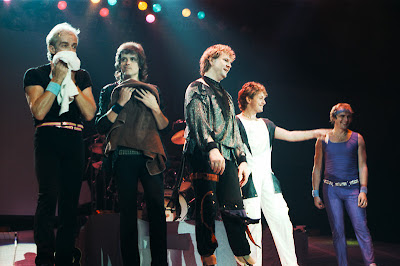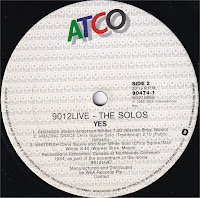Before things get too serious at Rock On Vinyl, I thought it might be fun to post a song at the end of each month, that could be considered to be either Weird, Obscure, Crazy or just plain Korny.
Based on Henri Charrière’s massively successful memoir of life in a French prison camp in Guyana, Papillon can boast the star power of Steve McQueen and Dustin Hoffman (the former giving one of his finest performances) and Franklin J. Schaffner’s film is an entertaining yarn, albeit one in which disbelief frequently has to be suspended (while Charrière almost certainly was imprisoned there, just about everything else has been disputed).
Jerry Goldsmith’s storied career featured many highlights – he personally considered his body of work for Schaffner (who gave the composer almost total freedom to do as he saw fit) as his best. Coming after Planet of the Apes and Patton, Papillon has not historically been placed on such a high pedestal as those two masterful scores – perhaps because the film, rightly, itself isn’t – but it’s always been one of my favourite works by Goldsmith (or any film composer) and I’d put it up on a pedestal alongside pretty much anything.
 |
| Jerry Goldsmith |
The brief “The Dream” is an arrangement of the main theme for two accordions – no orchestra this time – and then comes the more substantial “Hospital”, which introduces a heartbreaking new theme representing the prisoners’ suffering, and also offers anguished takes on both the prison theme and the main theme, whose brief appearance is emotionally devastating. “Papillion (Theme Variation)” – a track making its debut here – is a simple solo accordion take on the main theme.
After the action thrills comes the real centre piece of the score, the ravishingly beautiful “Gift from the Sea”, expanded for this album to eight minutes. It opens with a theme of great pastoral beauty, dancing around, as McQueen’s character enjoys – for a while – the freedom of life outside the prison. Evoking Ravel, Goldsmith’s music alone carries the joy of the sequence – which plays with barely another sound in the film, let alone dialogue – but it goes from melting the heart to breaking it, as things become increasingly anguished later on (and is that the Raisuli’s theme I hear?) It’s masterfully constructed, truly beautiful, and I’d put it up there with the composer’s finest individual pieces.
It wasn’t quite Raisuli’s theme, but it’s very close, and it then forms the basis for the very brief “The Pearl”. After this comes “Reunion”, deeply sad but very touching. Goldsmith is quoted in the liner notes as saying that the score starts complex and becomes simpler as it goes on, and it’s like he is stripping away the fat to leave the raw feelings exposed: when the main theme emerges with woodblock accompaniment, it’s just so tender, a beautiful expression of the bond between the two main characters. The theme returns in the little vignette “The Garden”, this time in much busier style.
The final four cues underscore the film’s finale. First is “Cruel Sea”, with the sad theme from “Freedom” expressing Papillon’s frustration as his latest escape attempt comes to nothing, but then hope returns in a set of variations on the main theme as he hatches his latest plan. The newly-expanded, two-part “Freedom” opens with the main theme from which a massive orchestral sustain launches itself as Papillon dives into the sea; then his theme rises, slowly at first, building to a rousing, glorious rendition to close.
For the end titles Goldsmith brings things full circle, with some dissonant strains accompanying images of the now-decaying, overgrown prison, the horrors of the past reflected in the music. Quartet’s new album adds a bit of new music (not as much as the running-time suggests: most of it’s previously-unreleased source music which nobody will ever listen to) but its real treasure comes in the sound, which is greatly improved over any previous release. The only demerit is that the beautiful French vocal version of the main theme from the previous Universal album isn’t present, but an English-language one from Engelbert Humperdinck – with its own kind of musical horrors – is here instead. Still, nothing can take away from the fact that this is an essential album, a luxurious presentation of a truly luxurious film score, the great Jerry Goldsmith at his magnificent best. [extract from movie wave]
The Storyline
Papillon tells the story of Papillon (played by Steve McQueen), imprisoned in the overseas penal colony of Caribbean French Guiana, on the northeast coast of South America. Papillon alleges that he is and always has been innocent of his charge (killing a pimp in France); nonetheless, France “has disposed of you,” we hear in booming tones from a man with a walrus mustache in the film’s opening scene. “The nation has disposed of you altogether.”
The Storyline
Papillon tells the story of Papillon (played by Steve McQueen), imprisoned in the overseas penal colony of Caribbean French Guiana, on the northeast coast of South America. Papillon alleges that he is and always has been innocent of his charge (killing a pimp in France); nonetheless, France “has disposed of you,” we hear in booming tones from a man with a walrus mustache in the film’s opening scene. “The nation has disposed of you altogether.”
Papillon and his fellow prisoners are thus relegated to lives of hard labor, to brutal regimes of solitary confinement, and, in the end, either to forced colonization of French Guiana or to a final stretch of unsupervised years of imprisonment on a craggy island surrounded by sheer cliff walls, the prisoners sent there deemed too broken in body, spirit, and will not pose a risk of escape or violence.
Along the way, the carceral gymnastics of the early modern state command the mens’ activities. They arrive at the island on a trans-Atlantic steamer ship, kitted out inside with barred cells and prisoners’ hammocks, its dormitory lined with steam pipes that can be turned on at will to punish the men inside. They are introduced to the guillotine, that disciplinary apparatus of last order of the French state. “Make the best of what we offer you,” an anonymous supervisor says, after the guillotine’s blade has crashed down through a thick stalk of vegetation, demonstrating its raw power, “and you will suffer less than you deserve.”
While on the transport ship, Papillon meets Louis Dega, who has been sent to Guiana for selling counterfeit national defense bonds. “I have no intention of even attempting to escape,” Dega says. “Ever.” He is slightly smiling when he says this, bemusing Papillon, who soon becomes Dega’s paid protection (and long-term friend) in the camps.
However, learning of that friendship, a prison warden whose family lost their fortune in counterfeit defense bounds, sends Papillon and Dega off together to clear swamps with nothing but ropes and their bare hands.
However, learning of that friendship, a prison warden whose family lost their fortune in counterfeit defense bounds, sends Papillon and Dega off together to clear swamps with nothing but ropes and their bare hands.
Their various chores soon include the extraordinary scene of prisoners sent out into the jungle to capture exotic butterflies—an activity that is at least doubly ironic. Not only are captives being asked, in turn, to capture rare species (including one prisoner, Papillon, whose very name comes from the butterfly tattooed on his chest), but, in an awesome detail, we learn that these particular butterflies are valuable precisely because the pigment in their wings is used for inking U.S. currency.
That it is Dega who tells us this—the counterfeiter supreme—lends the whole sequence an incredible, if macabre, poetry. But there is also something striking in this revelation of the commodity chain, suggesting that U.S. currency contains the remains of exotic butterflies hunted in the jungle by French prisoners. All objects—even objects that stand for other objects—come from somewhere, including state currency literally printed with the bodies of captives, both human and animal.
But, after this point, the real imprisonments—and, of course, the escapes—begin.
Papillon attacks a guard to protect Dega from a routine beating, only to be forced to flee into the jungle—diving into the swamp and swimming off into the roots of mangroves—when he realizes that he’ll be shot on sight for his violation (in fact, he dodges bullets as he leaps into the murky waters).
Except, of course, he doesn’t make it; he is turned in by local manhunters (former prisoners turned professional trackers of escapees); and he is introduced to the cell in which a great deal of the film then takes place.
Papillon attacks a guard to protect Dega from a routine beating, only to be forced to flee into the jungle—diving into the swamp and swimming off into the roots of mangroves—when he realizes that he’ll be shot on sight for his violation (in fact, he dodges bullets as he leaps into the murky waters).
Except, of course, he doesn’t make it; he is turned in by local manhunters (former prisoners turned professional trackers of escapees); and he is introduced to the cell in which a great deal of the film then takes place.
A brief note on the architecture of incarceration in Papillon. The cells have bars instead of roofs, allowing them to be watched from above by roving guards. However, this also means that the cell can be “screened”—that is, its only source of light can be blocked for six months at a time, something that soon happens to Papillon (who is reduced to eating roaches and centipedes in the darkness).
The prisoners receive their rations through a small hole near the floor, which pops open everyday at the sound of a whistle (there is no speaking allowed in the facility, helpfully painted with the word SILENCE in black letters on the outside walls). And the prisoners must lean forward and stick their heads through holes in the cell door for things like hair cuts and lice treatments—but also for occasional interrogations by the warden and his guards.
While locked up in darkness, Papillon has a dream in which he confronts a makeshift judge and jury on the beach somewhere back in France. For whatever reason, I have always loved this scene. “You know the charge,” a faceless judge shouts at Papillon. “Yours is the most terrible crime a human being can commit. I accuse you of a wasted life… The penalty is death.” Horrified by the accuracy of the charge, Papillon wanders back the way he came, muttering, “Guilty… Guilty… Guilty…”
Papillon, Dega, and another prisoner called Maturette make a break for it one night over the camp wall. To make an extremely long story short, they must sail to freedom by way of a leper colony and increasingly rough seas; but, arriving safely in Honduras, they’re forced to split up. Papillon runs into the rain forest with a local prisoner they happen to bump into on the beach, and the two of them are then hunted through the jungle by Afro-Caribbean trackers hired by the state. Many more events transpire—booby traps, cliff jumps, pearl-fishing tribesmen—before Papillon makes his way to a convent in a local town center, seeking refuge and forgiveness.
However, the church being, in effect, a wing of the state, mistaking ideological correctness for Christian morality, the nuns turn him in. I mention this also to indicate how, in the film, the state works: it relies upon—indeed, it cannot function without—local yet unofficial representatives, people it can hire (trackers) or who it can trust to volunteer (nuns) in the name of state continuity. In other words, the state puts out a call when a gap or blind spot arises, knowing there will always be someone who answers it.
So Papillon is sent back to solitary confinement, this time for 2 years. He barely survives this final incarceration and both Dega and Papillon are eventually sent off to Devil's Island to serve the remaining part of their life sentences.
I’ll just make two final points, while admitting that I’ve hardly grazed the surface of the film.
1) Papillon’s final escape comes from Devil’s Island, the aforementioned island of sheer cliffs where even guards are seen as unnecessary, the prisoners physically and mentally exhausted and thus believed to be incapable of investing in the effort of escape. But Papillon one day notices something in the waters of the bay below, a rhythm in the waves that allows for anything thrown into the water to avoid being crushed on the rocks and, instead, be dragged out to sea.
 |
| Devil's Island |
He first experiments with some coconuts—and then, lashing together a makeshift raft, he throws himself into the seventh wave and makes his way to final freedom.
Regardless of the accuracy of the film’s many dramatic enhancements, the ruined buildings of Papillon have the benefit of context: when the film cuts to the roofless cells and overgrown courtyards of this horrible and violent place of exile, the futility of the entire escapade—the tragedy of anyone caught up in the empty colonial machine—becomes both obvious and crushing. It’s as if no one ever escaped from anything, because there was nothing there in the first place; we’re just left with empty and impotent buildings, dissolved in shafts of light. [extract from bldgblog]
This post consists of FLACs ripped from my vinyl copy of the Movie Soundtrack released by Capitol records in 1973, which I stumbled upon at my local flee market some years ago. My first exposure to this great story was via my father's book collection and then seeing the movie at the Drive Inn with my family in the mid 70's. I was a big fan of Steve McQueen at the time, but Dustin Hoffman was a new name to me at the time. As a young teenager I was totally blown away by the story line and have since watched the movie multiple, multiple times and still get goose bumps during some of the dramatic scenes. Unknowingly, I now believe that a big part of the movie's appeal was its soundtrack and how it complemented the amazing scenery and acting.
While researching for this post, I was under the impression that my copy of this soundtrack was somewhat Obscure, however I since discovered that the soundtrack had been released on CD in 1988 and an expanded version in 2017. Nevertheless, I have still decided to post it here, as it is such a great soundtrack and deserves to be heard. Because the vinyl release did not feature the 'Catching Butterflies' segment, I have decided to include it as a bonus track for your further enjoyment.
01 Theme From Papillon 2:15
02 The Camp 2:57
03 Reunion 4:33
04 New Friend 2:02
05 Freedom 3:53
06 Gift From The Sea 6:42
07 Antonio's Death 2:25
08 Cruel Sea 1:26
09 Hospital 3:46
10 Survival 5:20
11 Catching Butterflies (bonus track) 2:57
Papillion Link (184Mb)


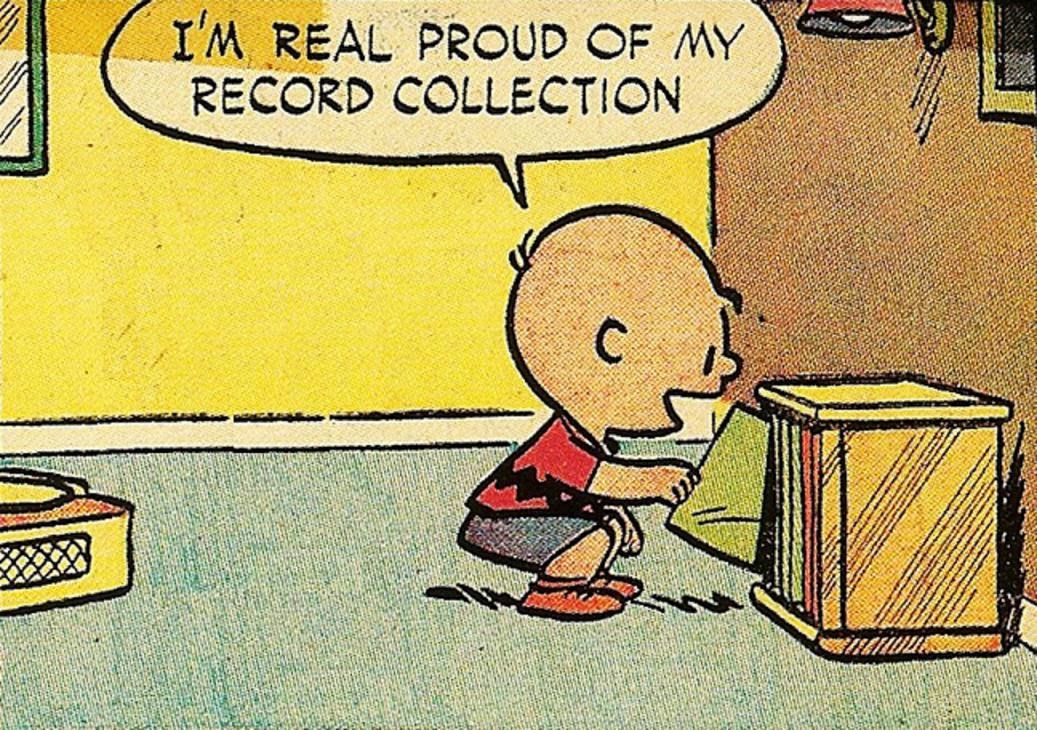

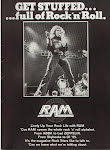
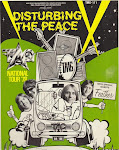

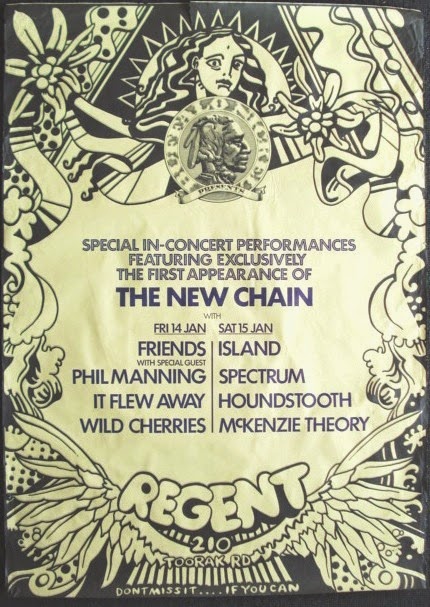











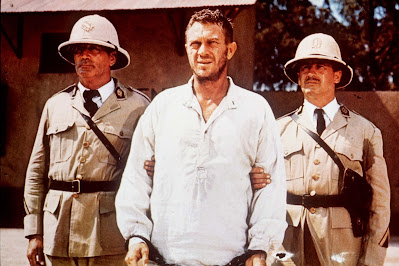






















%201973-74.jpg)













